What is the book about?
This guide is produced in partnership with Blue Peter.
The Christmas Carrolls, written by Mel Taylor-Bessent and illustrated by Selom Sunu, is the third title in the Blue Peter Book Club.
The book is about nine-year-old Holly Carroll and her family who are obsessed with Christmas. When Holly goes to a new school she realises that not everyone shares her love of Christmas and spreading cheer. She discovers some children that may not get a Christmas at all.
You can get a sneak peek of the book over on Blue Peter.
Ever wish it could be Christmas every day?
For nine year old Holly, it is!
She and her family celebrate year round with fairy lights, trees and even a carol singing toilet.
But when Holly starts at a new school, with a singing Santa backpack in the middle of September, she realises not everyone shares her enthusiasm.
Can Holly save the Christmas spirit including her own?
How do made-up words create a clear theme?
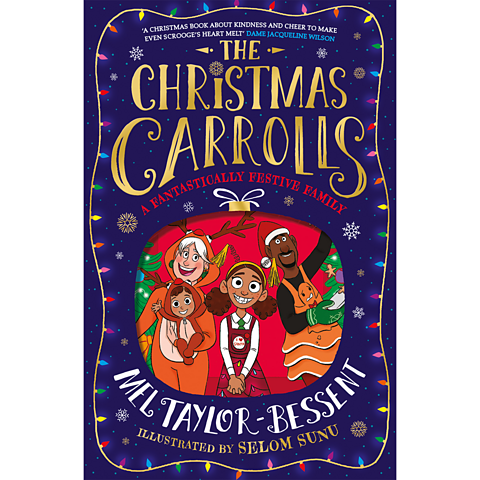
The Christmas Carrolls is a very Christmassy story as the Carroll family are obsessed with Christmas!
They use their own Christmassy words such as:
"Christmarrific"
"tree-mendous"
"snowtacular"
"cheerometer"
The author, Mel Taylor-Bessent, uses these made-up Christmas words to make one of the themeAn important message or the main idea that you keep seeing throughout a story. of the story very clear to the reader. This is of course, how fantastic Christmas can be!

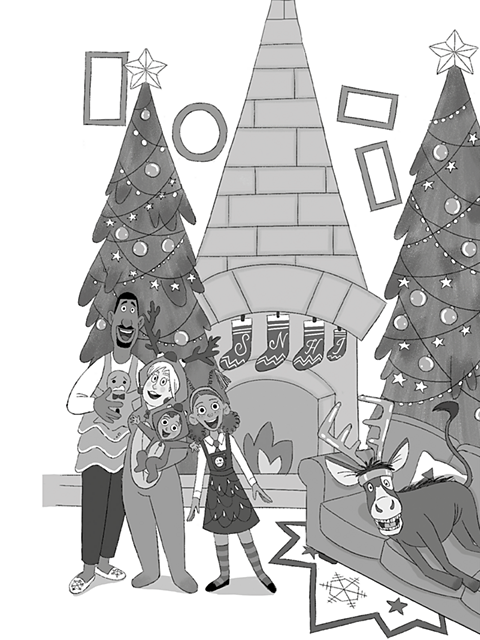
These made-up words also help you better understand the characters, particularly the Carroll family. By using made-up Christmas words in their speech, it's clear that the Carroll family absolutely love Christmas!
Lots of these made-up Christmas words are also used to entertain you, the reader.
Most are adjectivesWords that describe., however the author uses Christmas themed words to make puns too.
Puns use words that sound similar to make a simple joke such as:
"I'm ho-ho-home"
"This woman was snow joke"
Can you think of any other themes which are covered within the book?
Other themes touched upon in the story are:
- Friendship
- Moving house and new schools
- Standing out / being unique - not fitting in
- Children living in care / helping each other
Why are similes useful?
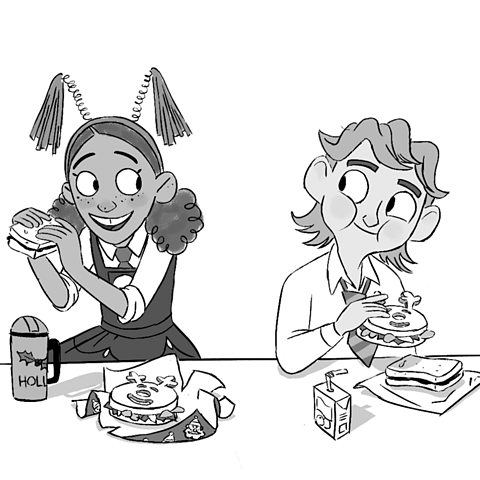
The author uses fantastic descriptions of the characters, their feelings and different events throughout the story. Can you spot any examples?
SimileDescribing something by comparing it to something else using the word 'like' or 'as'. are a descriptive writing tool that are used throughout the story.
They are a useful way to describe something without using a long list of adjectives. As you read, similes can create a clear image in your mind, helping to engage and absorb you in the story. For example:
"as ready as a reindeer on Christmas Eve" (page 48)
This tells you that Holly was very ready!
"squealing like a pack of excited elves" (page 111)
This tells us that the class was very excited to have no homework.
"I grabbed it like it was the last cookie in the jar" (page 130) This tells you that Holly grabbed the sandwich quickly.
"[the] knots in my stomach tightened like tangled tinsel" (page 178)
This tells you that Holly is sad and upset.

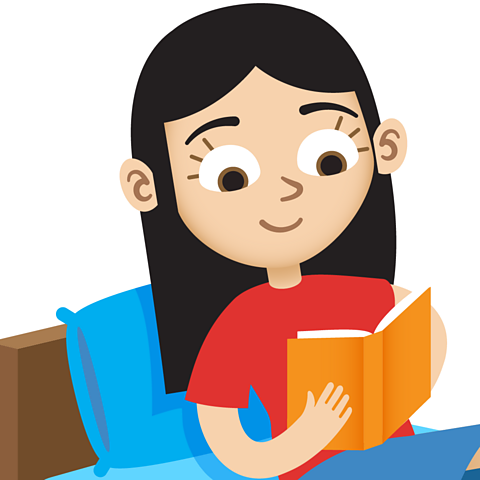
What is this simile trying to tell you?
"…but he was as rigid as a wooden nutcracker." (page 114)
The boy (Archer) was stiff with nerves.
What is parenthesis and what is it used for?

To keep you entertained, the author has added lots of extra detail or information into The Christmas Carrolls.
Using parenthesisAdding extra information using brackets (), commas , or dashes - -. is a writing technique for adding extra detail, whilst making sure that the story flows so it's interesting for you, the reader.
Parenthesis adds extra information to a sentence using:
- brackets
- dashes
- commas
In The Christmas Carrolls, the author has mostly used brackets () for parenthesis. Take a look at these examples:
"It was obviously my first step to becoming the greatest cheer-spreader (second to the big guy in the red suit, obviously) the world had ever seen." (page 138)
"Carson punched the air in totiement (total excitement)." (page 315)

Parenthesis can also show words added to a sentence as an 'afterthought'. Afterthoughts have been used lots in The Christmas Carrolls.
For example:
"The snow-o-meter (as if you didn't already know!) is a special thermometer that measures the likelihood of snowfall." (page 9)
Your sentence must still make sense, even if you take the parenthesis (extra information) out.

How is the reader made to feel like they are part of the story?
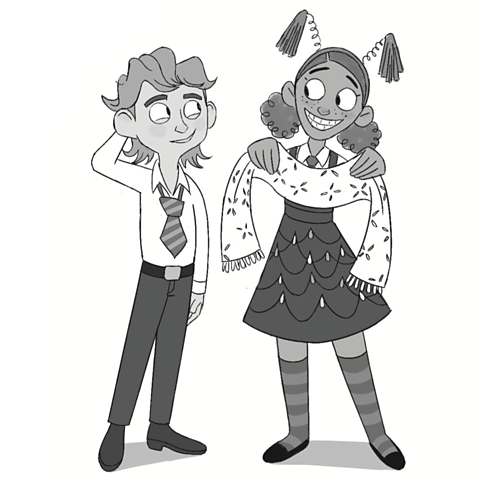
You might notice how Holly (the main character who is telling the story) speaks to you directly.
Amazingly, the first sentence of the whole story talks directly to YOU, the reader:
"Have you ever had an idea hit you so hard, you nearly fell off the toilet?" (page 1)
During the story, Holly continues to talk to you…
"You see where I'm going with this, don't you?" (page 75)
"What did you do? I hear you ask?" (page 256)
By asking questions using the word 'you', the author makes you feel like you're part of the story - almost as if Holly is speaking directly to you!
There's a clever reason for this. Asking questions makes you engage more with the story.

Activity 1
Read these made-up words and puns. Which is your favourite? Why?
Can you put them in order with your favourite first and your least favourite last?
A. Your tree looks tinsel-riffic!
B. I've got snowiches for lunch today.
C. Dad asked if I wanted a mince pie, I said "Snow thanks!"
D. "Knock Knock!"…"Who's there?"…"Mary!"…"Mary who?"…"Mary Christmas!"
E. It was snow big deal.
Challenge: Can you create your own pun?
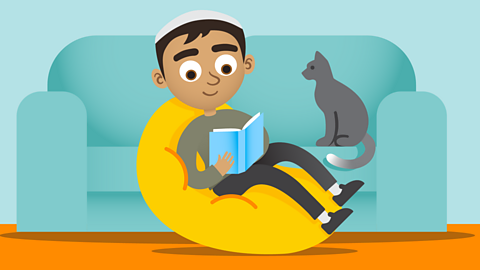
Activity 2
Activity 3
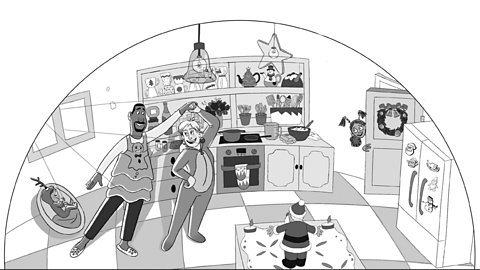
There are lots of made-up Christmas words in The Christmas Carolls. Many are Christmas words merged together with another word such as "Christmariffic" (Christmas and terrific).
Can you create five different made-up, Christmas themed adjectives by merging one word form the 'Christmas word' list and another from the 'Adjectives' list?
| Christmas Words | Adjectives |
|---|---|
| tinsel | tremendous |
| merry | amazing |
| tree | terrific |
| sparkle | fantastic |
| bauble | brilliant |
More on Blue Peter Book Club
Find out more by working through a topic
- count5 of 13
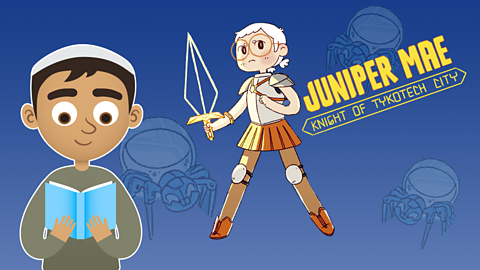
- count6 of 13
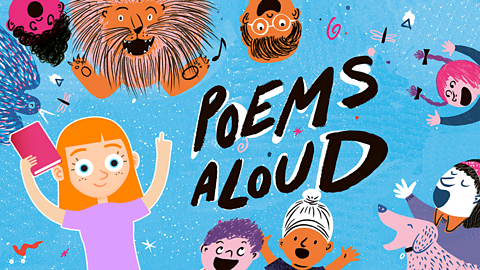
- count7 of 13

- count8 of 13
